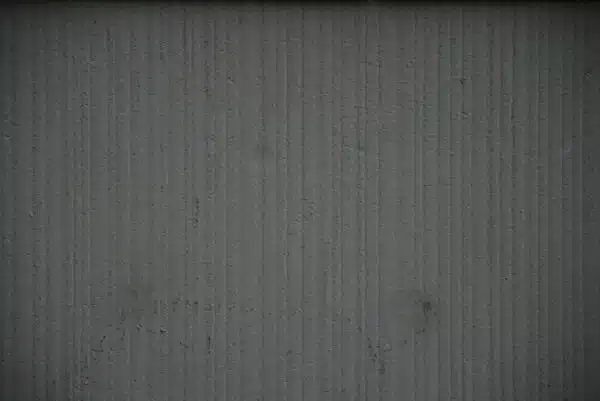Asbestos siding was a popular building material used in the construction of homes and buildings in the United States during the mid-20th century. While it provided excellent insulation and fireproofing properties, it posed a significant health risk to those who came into contact with it due to its carcinogenic nature. Now that we know about the hazards of asbestos, it is imperative to remove asbestos siding from our homes to ensure our safety.
Removing asbestos siding requires a careful approach that minimizes exposure to harmful fibers. Asbestos abatement specialists have developed safe procedures for handling and removing asbestos-containing materials (ACMs) such as siding. In this article, we will discuss how to safely remove asbestos siding from your home using these industry-approved techniques. We aim to provide you with comprehensive knowledge of the process so that you can make informed decisions about whether you need professional help or can undertake this project on your own.
Understanding The Risks Of Asbestos Exposure
Asbestos has been used in the construction industry for its insulating and fire-retardant properties. However, exposure to asbestos fibers can cause serious health risks such as lung cancer, mesothelioma, and asbestosis. Asbestos fibers are microscopic and can easily become airborne when materials containing asbestos are disturbed or damaged.
Assessing health risks associated with asbestos exposure is critical before removing asbestos siding from your home. Prolonged inhalation of asbestos fibers can lead to irreversible lung damage that may not show symptoms until many years later. Proper safety protocols must be followed to minimize the risk of exposure during removal, including wearing protective clothing and respirators.
As a professional in the field of asbestos abatement, it is my responsibility to ensure that homeowners understand the dangers of asbestos exposure and follow proper safety protocols when dealing with it. In the next section, we will discuss how to identify if your home contains asbestos siding before beginning any removal process.
Identifying Asbestos Siding In Your Home
Asbestos was commonly used as a building material before the 1980s, especially for siding. Asbestos siding is dangerous and should be handled with extreme caution. The first step in safely removing asbestos siding is to identify it. There are various asbestos siding identification methods that you can use.
One of the most straightforward ways to identify asbestos siding is through visual inspection. If your home was built before the 1980s and has not undergone any significant renovations, there is a high possibility that it has asbestos-containing materials, including the siding. Asbestos siding typically has a grooved surface pattern and appears like concrete or cement. It can also come in different colors but is usually gray or white.
Signs of asbestos contamination in the home include dust particles coming from walls or ceilings, insulation materials that are crumbly or brittle, and cracks on drywall tape joints. You may also notice peeling paint on surfaces near pipes or ductwork. If you suspect that your home has asbestos-containing materials, it’s best to consult an experienced asbestos abatement professional who can perform an inspection and testing to confirm if your suspicions are correct.
Asbestos exposure can cause serious health problems such as lung cancer and mesothelioma. Therefore, identifying asbestos-containing materials in your home is crucial for ensuring your safety and that of your loved ones. In the next section, we will discuss how to assess the condition of asbestos siding so that you can determine if it requires removal or encapsulation to prevent further exposure to harmful fibers.
Assessing The Condition Of Asbestos Siding
After identifying asbestos siding in your home, the next important step is to assess its condition. It is important to remember that not all asbestos-containing materials are dangerous, and not all damaged asbestos siding needs to be removed. Assessing severity of damage requires a professional inspection to determine whether it poses a risk to you and your family’s health.
The severity of damage can range from minor cracks or chips to major deterioration or breakage. If the damage is minimal, it may be possible to repair the siding without removing it. However, if there is extensive deterioration, removal may be necessary. A professional inspector will also assess whether the siding is friable or non-friable. Friable materials crumble easily and release fibers into the air, making them much more dangerous than non-friable materials.
To help you better understand what a professional inspector looks for when assessing asbestos siding, here are some key factors they consider:
- The age of the material
- The location of the material in your home
- Visible signs of wear and tear
- The condition of paint or sealant on the material
- Any previous attempts at repair or removal
In summary, assessing the condition of asbestos siding requires a professional inspection to determine whether it poses a risk to your health. Severity can range from minor cracks to major deterioration, and friability plays an important role in determining risk level. By understanding these factors, you can make informed decisions about how best to approach safe removal or repair options for your home. Next we will discuss choosing between professional and DIY removal methods.
Choosing Between Professional And Diy Removal
When it comes to asbestos siding removal, homeowners often face the decision between DIY removal and hiring a professional. While the cost of DIY removal may seem attractive at first glance, there are many factors to consider before attempting to remove asbestos siding on your own. The process can be dangerous and requires specialized equipment and knowledge.
Professional removal companies have the experience and training necessary to safely remove asbestos siding without risking exposure to harmful fibers. They also have access to high-quality protective gear and specialized equipment required for the job. DIY removal may save money in the short term, but it can lead to costly mistakes that could cause harm to you or your family.
When considering cost comparison between professional and DIY removal, it’s important to factor in all associated costs. DIY removal may seem cheaper, but if you make a mistake during the process or fail to properly dispose of asbestos waste, you could face hefty fines from local authorities. It’s also important to remember that even with proper protective gear, there is always a risk of exposure when handling asbestos materials. In contrast, hiring a professional company ensures that all safety protocols are followed, minimizing risk and liability.
Moving forward with any type of asbestos abatement work should not be taken lightly. Whether choosing professional or DIY removal methods, homeowners must first obtain necessary permits and licenses before beginning work. Failure to do so can result in fines or legal action by local authorities. In the next section, we will discuss how to obtain necessary permits and licenses for safe asbestos siding removal.
Obtaining Necessary Permits And Licenses
Just as a ship needs a proper compass to navigate the sea, homeowners need specific permits and licenses before removing asbestos siding from their homes. Obtaining permits is crucial in avoiding legal repercussions and ensuring safety in the removal process. Asbestos abatement specialists are well-versed in the requirements for obtaining permits, which can vary depending on location and property type.
A common mistake that homeowners make is assuming that they can handle asbestos removal on their own. The reality is that asbestos poses significant health hazards if not removed properly. Hiring professionals with experience in asbestos abatement ensures that the job is done safely, efficiently, and within legal guidelines. Asbestos abatement specialists have access to specialized equipment and techniques that homeowners do not possess, which enables them to remove asbestos without causing further contamination.
If homeowners choose to hire a professional team for their asbestos removal project, it is essential they choose a licensed contractor with experience in handling similar projects. The contractor should be able to provide references, proof of insurance, and certifications for each member of their team. By doing so, homeowners can rest assured knowing they have entrusted the job to experienced professionals who will take every necessary precaution to ensure safety during the removal process.
Transitioning into the subsequent section: Before any work begins on removing asbestos siding from a home, it is essential to prepare the work area thoroughly. This includes taking steps such as sealing off vents and doors, setting up negative air pressure systems, and wearing proper protective gear to prevent exposure during the removal process.
Preparing The Work Area For Asbestos Removal
Before beginning the removal of asbestos siding, it is essential to properly prepare the work area. Containment procedures must be established to prevent the release of asbestos fibers into the air and minimize exposure risks. This includes isolating the work area with heavy-duty polyethylene sheeting or other appropriate barriers to prevent contamination of surrounding areas.
In addition to containment procedures, it is also important to follow disposal regulations when removing asbestos siding. Asbestos-containing materials cannot be disposed of in regular trash or recycling bins. Instead, they must be handled according to state and federal regulations and disposed of at approved landfill sites.
Proper preparation of the work area is critical for safe asbestos removal. By utilizing containment procedures and following disposal regulations, you can ensure that asbestos fibers are not released into the air and that all hazardous materials are safely removed from your property.
- Establish proper containment procedures before beginning removal
- Use heavy-duty polyethylene sheeting or other appropriate barriers
- Follow all state and federal disposal regulations
- Handle all asbestos-containing materials with care
- Dispose of materials only at approved landfill sites.
Moving forward, setting up appropriate safety measures is crucial for a successful asbestos removal process.
Setting Up Appropriate Safety Measures
After the work area is prepared, it is important to set up appropriate safety measures before beginning any asbestos removal. This includes using proper protective gear, such as respirators, gloves, and disposable coveralls. These items should be worn at all times during the removal process to prevent inhalation or contact with any asbestos fibers.
Respirators are especially important for protecting the lungs from asbestos fibers that may become airborne during removal. It is important to choose a respirator that is specifically designed for use with asbestos and has a high filtration efficiency. Gloves and disposable coveralls should also be worn to prevent skin contact with any asbestos fibers.
In addition to wearing proper safety gear, it is important to follow proper disposal procedures for any materials that may contain asbestos. All materials should be placed in sealed bags labeled as containing asbestos and disposed of in accordance with local regulations. By taking these precautions and using appropriate safety gear, it is possible to safely remove asbestos siding without risking exposure to harmful fibers.
Moving on to the next section, the first step in using proper protective gear is selecting the appropriate respirator for the job.
Using Proper Protective Gear
- When removing asbestos siding, it is essential to wear the right protective gear, such as a face mask, gloves, and coveralls.
- Additionally, a respirator, goggles, and shoe covers should be worn to protect the eyes, mouth, and feet during the asbestos removal process.
- A disposable suit, hard hat, and head protection must also be worn for further protection.
- Hearing protection, disposable gloves, disposable aprons, and disposable overalls must also be worn while removing asbestos siding.
- A face shield and full-body suit should be worn for maximum protection from airborne asbestos particles.
- It is important to use all necessary protective gear when removing asbestos siding in order to ensure the safety of workers.
Face Masks
When it comes to safely removing asbestos siding, wearing respirators and ensuring proper ventilation are both crucial. Asbestos fibers can be released into the air during the removal process, and inhaling these fibers can lead to serious health problems. Respirators should be worn by anyone involved in the removal process to protect against inhalation of these fibers.
It is important to choose the right type of respirator for the job. The respirator should be rated for filtering out asbestos fibers, and it should fit snugly over the nose and mouth. It is also important to ensure that the filters are changed frequently to maintain their effectiveness. A trained asbestos abatement specialist will be able to recommend which type of respirator is best for a particular situation.
In addition to wearing respirators, proper ventilation is essential when removing asbestos siding. This can help to reduce levels of airborne asbestos fibers by directing them outside or into an air filtration system. A specialist will be able to assess the size and type of space being worked on and determine what type of ventilation system is needed. Proper ventilation not only protects those working on the project but also helps keep others in nearby areas safe from exposure as well.
Gloves
Choosing appropriate protective gear is essential when it comes to asbestos abatement. As an asbestos abatement specialist, it is my responsibility to guide individuals on the proper equipment that should be used in their specific situation. One important piece of equipment that should not be overlooked is gloves. Gloves are necessary for protecting the skin from contact with asbestos fibers and other hazardous materials during removal.
When choosing gloves for asbestos removal, it is important to select high-quality gloves that are specifically designed for this purpose. These gloves must be made of durable materials that can withstand exposure to chemicals and abrasion. They should also fit well to ensure maximum protection against exposure to harmful substances.
Purchasing high-quality gloves may cost more, but it is an investment in safety and health. It is important to remember that any type of damage or wear on the gloves will reduce their effectiveness and increase the risk of exposure. Therefore, gloves should be inspected regularly for signs of damage such as tears or punctures and replaced immediately if any issues are found. By taking these precautions and selecting appropriate protective gear, everyone involved in the asbestos abatement process can stay safe and healthy throughout the project.
Coveralls
Asbestos abatement specialists are responsible for choosing appropriate protective gear for individuals involved in the removal of asbestos. One essential piece of equipment that should not be overlooked is coveralls. Coveralls protect the skin and clothing from contact with asbestos fibers during removal.
When selecting coveralls, it is important to choose high-quality ones specifically designed for asbestos removal. These coveralls must be made of durable materials that can withstand exposure to chemicals and abrasion. They should also fit well to ensure maximum protection against exposure to harmful substances. It is recommended to choose disposable coveralls for easy and proper disposal methods.
Proper disposal methods are essential when it comes to coveralls used in asbestos removal. Once the job is complete, the contaminated coveralls must be disposed of properly as they are considered hazardous waste. Asbestos abatement specialists must educate individuals on how to dispose of their protective gear according to local regulations to prevent any risk of harm or contamination. By choosing appropriate coveralls and following proper disposal methods, everyone involved in the asbestos abatement process can stay safe and healthy throughout the project.
Wetting Down Asbestos Siding To Minimize Dust
As the old saying goes, an ounce of prevention is worth a pound of cure. This is especially true when it comes to asbestos abatement. One key factor in safely removing asbestos siding is minimizing dust. Dust from asbestos fibers can be extremely hazardous to your health and cause serious respiratory problems such as mesothelioma.
To minimize dust, it is important to wet down the area before starting any removal process. Water helps to keep the fibers from becoming airborne and spreading throughout the environment. It is also important to use proper ventilation during the process to ensure that any remaining fibers are properly contained and removed from the area.
When it comes to asbestos abatement, proper ventilation cannot be overstated. Without proper ventilation, even small amounts of asbestos can become a major hazard for those working on the project or anyone nearby. Make sure that you have adequate ventilation before beginning any work and always follow best practices for containment and removal.
In order to safely remove asbestos siding, it is important to work in small sections rather than trying to tackle the entire job at once. By working in small sections, you can better control the spread of dust and ensure that all fibers are properly contained and removed from the area. Remember to always take precautions such as wetting down the area beforehand and using proper ventilation throughout the entire process.
Removing Asbestos Siding In Small Sections
Removing asbestos siding in small sections is a safe and efficient way to avoid disturbing the fibers and releasing them into the air. To begin, it is important to wear appropriate personal protective equipment, including gloves, goggles, a respirator mask, and clothing that covers all skin. Before starting work, ensure that the area around the building is clear of people, pets, and other objects.
Cutting techniques for removing asbestos siding include using hand tools such as a utility knife or handsaw to score the material before gently prying it off with a pry bar. Wetting the material with water or using an encapsulation agent can also help to reduce dust and fibers released during removal. It is important to avoid power tools such as grinders or saws which can create excessive dust and damage the material.
Proper disposal methods for asbestos-containing materials are crucial to prevent further exposure risks. Asbestos waste should be double-bagged in thick plastic bags labeled with warning signs indicating its contents. The bags should then be transported in leak-proof containers to an approved landfill site for hazardous materials. It is essential not to dispose of any asbestos-containing materials in regular trash bins.
Removing asbestos siding in small sections requires careful planning, attention to detail, and adherence to strict safety guidelines. By utilizing cutting techniques that minimize dust and fibers released during removal and following proper disposal methods for asbestos-containing materials, you can safely remove this hazardous material from your property while protecting yourself and others from potential health risks. With these steps completed successfully, it’s time to move on to disposing of asbestos-containing materials through approved means of transport and landfill sites.
Disposing Of Asbestos-Containing Materials
Once the asbestos siding has been successfully removed, it is important to properly dispose of the materials. Asbestos waste disposal should be done in accordance with local and federal regulations. This means that you cannot simply throw the siding in the trash or take it to any landfill. Instead, you must find a landfill that is authorized to accept asbestos-containing materials.
Before transporting the asbestos waste, it should be double-bagged in heavy-duty plastic bags that are labeled as containing asbestos. You should also wet down the material before bagging it to prevent any fibers from becoming airborne during transportation. It is important to remember that asbestos is a hazardous material and can cause serious health problems if not handled properly.
When selecting a landfill for asbestos disposal, make sure that they are licensed by your state’s environmental agency and have experience handling hazardous materials like asbestos. The landfill should also follow all state and federal regulations regarding waste disposal. Failure to comply with these regulations can result in fines or legal action.
Transition: Now that we have covered how to properly dispose of asbestos-containing materials, let’s move on to the next step: cleaning up after asbestos removal.
Cleaning Up After Asbestos Removal
Asbestos removal is a complex process that requires attention to detail and adherence to strict safety protocols. Once the asbestos siding has been safely removed, it is important to take all necessary precautions when cleaning up the area. Post removal cleaning involves thorough cleaning of all surfaces, equipment and tools used during the removal process.
Disposal regulations must be followed carefully to ensure that any asbestos-containing materials are disposed of properly. This may involve bagging the materials in specialized bags or containers and transporting them to a designated disposal site. Asbestos abatement specialists must be familiar with local and federal regulations governing the transport and disposal of asbestos-containing materials.
Proper post-removal cleaning and disposal of asbestos-containing materials are crucial for ensuring the safety of workers and occupants of the building. Asbestos fibers can remain airborne for extended periods of time if not handled properly, posing a serious health risk. As such, conducting air quality testing following asbestos removal is an essential step in ensuring that the area is safe for occupancy.
Conducting Air Quality Testing
Conducting air quality testing is an essential step in the asbestos abatement process. Asbestos fibers are known to cause severe respiratory illnesses, including lung cancer and mesothelioma. Therefore, it is crucial to test the air quality before, during, and after removing asbestos-containing materials.
Professional testing should be conducted by a certified asbestos abatement specialist with extensive experience in conducting air quality tests. The air samples are collected using specialized equipment and analyzed in a laboratory to determine if any harmful levels of asbestos fibers are present. The results of the tests will determine the appropriate safety measures needed to protect workers and occupants of the building from exposure to airborne asbestos fibers.
The importance of professional testing cannot be overstated. Failure to conduct adequate air quality testing could expose individuals to deadly asbestos fibers, leading to long-term health problems or even death. It is always best to hire a professional who can provide proper testing, ensure that all necessary precautions are taken during the removal process, and confirm that the area is safe for re-occupancy.
Transition: In addition to conducting air quality testing, it is also essential to consider replacing asbestos siding with safer alternatives.
Replacing Asbestos Siding With Safer Alternatives
Asbestos siding removal is not a task for the faint of heart. It’s a job that requires specialized training and equipment, as well as strict adherence to safety protocols. But despite the dangers involved, it’s a task that must be tackled if you want to keep your property safe from harm.
When it comes to removing asbestos siding, there are several key steps that need to be taken. First and foremost, you’ll need to ensure that you have the appropriate protective gear on hand, including a respirator, gloves, and coveralls. You’ll also need to make sure that the area around your property is properly contained so that any asbestos fibers released during the removal process do not spread beyond your property line.
Once these preliminary steps have been taken care of, it’s time to begin the actual removal process. This typically involves carefully prying off each individual piece of siding using specialized tools and then disposing of them in an approved manner. While this can be a time-consuming and difficult process, it’s crucial for ensuring that your property remains safe and asbestos-free.
Asbestos-free alternatives are readily available on the market today for homeowners looking to replace their old asbestos siding with safer options. These cost-effective options come in various styles and colors while boasting greater durability than traditional materials like wood or vinyl. They can last up to 50 years without showing signs of wear or tear! By switching over to these newer materials, homeowners can rest easy knowing they’re keeping themselves and their families safe while still maintaining the aesthetic appeal of their home.
It’s important not only to remove asbestos safely but also monitoring your health for signs of asbestos exposure throughout this process. Regular check-ups with your doctor should be scheduled in order for early detection should any symptoms arise. Be sure to mention any previous exposure or potential contamination so they can run proper tests accordingly. It may seem like an added hassle at first but ultimately taking these precautions could save you from serious health problems down the line.
Monitoring Your Health For Signs Of Asbestos Exposure
Asbestos exposure can lead to a variety of health problems, including lung cancer and mesothelioma. It is important to monitor your health for signs of asbestos exposure if you have been exposed to this hazardous material. Symptoms of asbestos-related diseases may not appear for several years after exposure, so it is important to be vigilant and seek medical attention if you suspect that you may have been exposed.
Tracking symptoms is an essential part of monitoring your health for signs of asbestos exposure. If you experience any unusual symptoms, such as persistent coughing, shortness of breath, chest pain or tightness, or fatigue, it is important to take note of these symptoms and seek medical attention. Other possible symptoms include weight loss, difficulty swallowing, and hoarseness.
Medical check-ups are also an important tool in monitoring your health for signs of asbestos exposure. Regular check-ups with your healthcare provider can help detect early signs of asbestos-related diseases. During these check-ups, your provider will review your medical history and conduct a physical exam. In addition, they may recommend imaging tests or other diagnostic procedures to identify any potential problems.
- Be aware of any unusual symptoms such as persistent coughing or chest pain.
- Seek regular medical check-ups with your healthcare provider.
- Take immediate action if you suspect that you may have been exposed to asbestos.
It is crucial to monitor your health for signs of asbestos exposure if you have been exposed to this hazardous material. Tracking symptoms and seeking regular medical check-ups can help detect early signs of asbestos-related diseases before they become more serious. Remember to take immediate action if you suspect that you may have been exposed to asbestos and always prioritize your health and well-being.
Conclusion
Asbestos siding removal is a serious matter that requires careful consideration and planning to avoid exposure to harmful asbestos fibers. As an asbestos abatement specialist, it is important to understand the risks of asbestos exposure, and the steps required for safe and effective asbestos removal. The first step is identifying whether your home contains asbestos siding, which can be done through a professional inspection or by taking a sample for laboratory testing.
Once you have identified the presence of asbestos siding in your home, it is important to assess its condition and determine if removal is necessary. If removal is required, it is crucial to obtain necessary permits and licenses, as well as take appropriate safety measures during the process. Air quality testing should also be conducted after removal to ensure that the area is free from any harmful fibers.
Replacing asbestos siding with safer alternatives not only protects your health but also adds value to your home. Asbestos abatement specialists are trained to handle these tasks safely without risking anyone’s health or safety. Remember, proper monitoring of one’s health for signs of asbestos exposure should always be carried out in order to prevent any long term damage caused by this hazardous material. It’s crucial for homeowners to work with professionals when dealing with this potentially dangerous substance.
Image Credits
- “asbestos siding” by Firehouse Designs (featured)





























